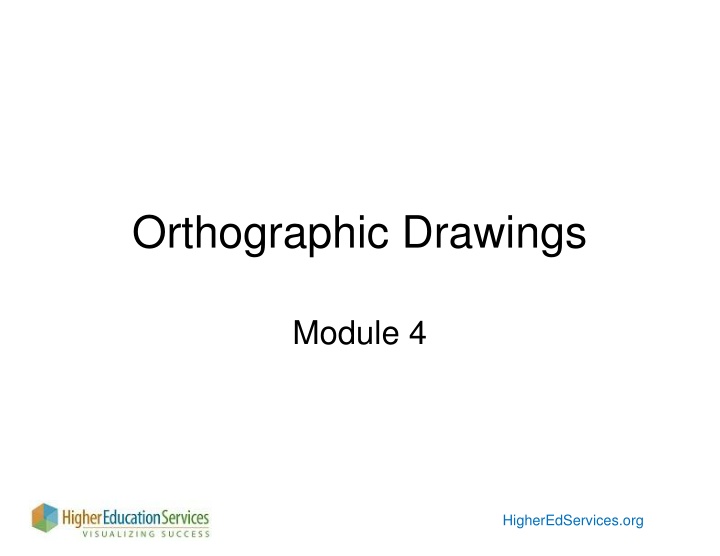
Orthographic Projections in Technical Drawing
Explore the world of orthographic drawings and projections, including topics like normal surfaces, hidden lines, and isometric sketching. Learn how objects are projected onto glass cubes and unfolded to show multiple dimensions, with views aligned for easy visualization. Understand the significance of visible and hidden lines for graphical representation in technical drawings.
Download Presentation

Please find below an Image/Link to download the presentation.
The content on the website is provided AS IS for your information and personal use only. It may not be sold, licensed, or shared on other websites without obtaining consent from the author. If you encounter any issues during the download, it is possible that the publisher has removed the file from their server.
You are allowed to download the files provided on this website for personal or commercial use, subject to the condition that they are used lawfully. All files are the property of their respective owners.
The content on the website is provided AS IS for your information and personal use only. It may not be sold, licensed, or shared on other websites without obtaining consent from the author.
E N D
Presentation Transcript
Orthographic Drawings Module 4 HigherEdServices.org
Session Topics Orthographic Projection Normal Surfaces Hidden Lines Isometric Sketching from Orthographic Projections
Orthographic Projection Imagine an object is surrounded by a glass cube. The object's surfaces are projected onto the faces of the glass cube. The projection rays are perpendicular to the panes of glass
Orthographic Projection Unfold the cube so that it lies in a single plane Three views of the object are now visible on the same plane in space Fold lines
Orthographic Projection When the glass cube is unfolded each view shows two dimensions of the object: W D D Front view: Height and Width Top view: Width and Depth Right view: Depth and Height H H W
Orthographic Projection Views are aligned with one another (features project from one view to the next)
B Normal Surfaces A Parallel to one of the six glass panes of our transparent cube Perpendicular (normal) to the projectors to/from that plane Shown true size and shape in the view that they are parallel to Seen as edges (lines) in the other principal views Surface A appears as edge 1 and 4 in top & right views Surface B appears as edges 2 and 3 B Edge 3 Edge 2 Edge 1 A Edge 4
Hidden Lines Some object have edges which cannot be seen from certain viewing angles Showing these edges provides valuable graphical information Visible edges are continuous (solid) lines (object lines) Hidden edges are dashed lines (hidden lines) to avoid confusing them with visible edges
Hidden Lines Visible Line (Solid lines, can be seen in a given view, aka: Object Lines) Hidden Line (Dashed lines; can't be seen in that view)
Hidden Lines and Object Lines Together If a solid line and a hidden line are on top of each other, show only the solid line 2 3 1 2 1 Coded Plan
Isometric Sketches from Orthographic Views Sometimes you are asked to construct Isometric sketches from Orthographic views to develop visualization skills. The box method is one way to do this. For some problems, the box method may not be very helpful.
Isometric Sketches from Orthographic Views 1. Find the object's overall dimensions from the orthographic views and sketch that size box on isometric dot paper. D H W
Isometric Sketches from Orthographic Views 2. Sketch the top, front, and right side views in their appropriate locations on the box.
Isometric Sketches from Orthographic Views 3. Add/remove lines until the view is complete.
Course Software.. Complete the software module on Orthographic Projections
Orthographic Drawings Homework Complete the following pages in Module 4 ortho- 1 - 2 5 - 8 11 - 12 15 - 18 23 - 24
